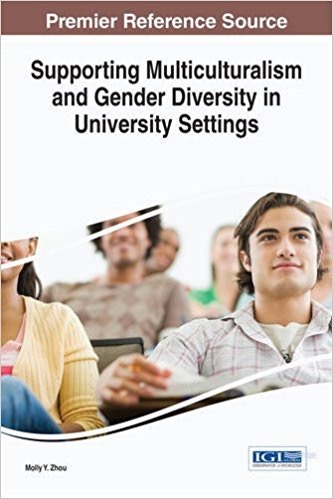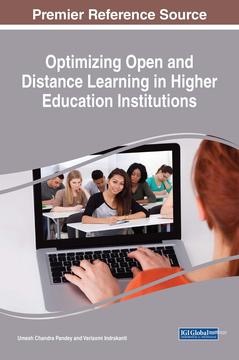distance learning
Select an item by clicking its checkbox
My journey into online education was indirect. I started out as a missionary-graduate student who was working on a Master of Arts degree from overseas. My first distance learning class was on cassette tape, but soon after our school developed online courses in which the primary interaction was through listservs. ...

Supporting Multiculturalism in Open and Distance Learning Spaces
Date Reviewed: January 18, 2019
Globalization directly affects all spheres of human activity. Higher education is no exception. Teachers are encouraged to engage emerging technologies and devices in the practice of their teaching with the hope of advancing student learning. The popularity of distance learning is one example of globalization’s reach. Anyone with an Internet connection can pursue higher education. Boundaries and barriers to education are easily crossed through Internet technology. Cooperation across international higher educational boundaries fosters new cooperation among faculty and raises questions about what connotes learning in diverse cultural contexts. Supporting Multiculturalism in Open and Distance Learning Spaces by Elif Toprak and Evrim Genc Kumtepe provides a detailed overview of contemporary cultural issues and complexities in distance education. The book helps teachers, researchers, scholars, and policymakers approach global education from a variety of cultural perspectives.
The book is divided into three sections. Section 1, “Cultural Issues in Management and Global Distance Education,” describes the practical experience the authors gained when working in open or distance education environments. For example, this section covers such topics as the influence of gender on educational policies, the role of quality assurance, and the relationship between cultural perspectives and efficient distance learning. Section 2, “Cultural Issues in Theory and Technology,” looks at close cooperation between education, culture, and technology, starting from the rise of the modern digital era to contemporary contexts. It emphasizes how important it is for the educators to “effectively internalize the premodern, modern, and postmodern eras” (1) or risk either losing a necessary contact with their students or misjudging their conduct and aspirations. The important role of virtual culture and culturally-sensitive instructional design principles is foregrounded in Section 3, “Cultural Issues in Instructional Design and Communication.” For example, “Culturally Sensitive Instructional Design Principles for Online Learning Environments,” explores different components of culture in the learning space, analyzes Hofstede’s Theory of Cultural Dimensions, and evaluates other cultural frameworks and their application in distance learning.
Supporting Multiculturalism in Open and Distance Learning Spaces is organized to share experiences and find efficient ways to nurture multiculturalism in learning environments. The book will interest both practitioners and scholars as it contains useful information on theoretical approaches to open and distance learning spaces, analysis of relevant studies, and practical advice on how to utilize various aspects of global education. The three sections with their specific foci enable readers to quickly surf the book without having to read every chapter. Each section contains a detailed reference list of literature, which is also an essential benefit of the book.

Optimizing Open and Distance Learning in Higher Education Institutions
Date Reviewed: January 18, 2019
What impact does education have upon a nation’s economy? Can education be used as a global instrument to overcome obstacles and foster change? These are just a few of the pivotal questions discussed throughout this resource that targets researchers and educators alike by introducing them to new theories and research concepts. This resource’s scholarly references and figures provide a broad perspective on trends and standards in higher education. The collection examines developing areas across the globe, the impact of initiatives on nations’ standings, and the connection between knowledge, economy, and technological capabilities in society. More importantly, this publication provides solutions for optimizing open and distance learning in higher education. It explores various developing nation’s policies regarding distance and open learning programs, obstacles and opportunities in higher education, as well as technological sustainability.
Optimizing Open and Distance Learning in Higher Education Institutions discusses how the “United Nations Development Programme (UNDP) creates policies for leadership skills, partnerships, and sustainable development” in developing areas (UNESCO, 2015). The research recognizes education as a global tool for tackling challenges and achieving change based on policies. It describes how development policies encourage higher education institutions to uniquely customize open and distance learning to suit individual growth needs and explains how customization then allows flexibility that combats cultural and socio-economic barriers. In developing nations, where continual changes in education and training rely upon such adaptability in education, open and distance learning can help to stabilize the economy and create a solid infrastructure.
Global cooperation creates a new dimension of challenges and opportunities in higher education. Learners are exposed to new techniques to improve skills and gain knowledge through open and distance learning by shifting toward learner-centered education and self-directed learning. Various contributors from around the globe form a fluid collection of writing grounded in research specific to open learning, distance learning, and e-learning.
This reference is highly recommended for researchers, educators, and students who seek to advance technology and education globally. This work explores gaps in theory and practice and offers recommendations for improvement. The different chapters analyze: e-learning, open and distance learning and education, higher education, quality assurance, trends, sustainability, and integration. Subtopics identify the services provided, access to education, management and capacity, technology equality, knowledge-based development, and sustainable growth in education. Further themes stress limitations, acquisition of “on the job” training components needed for employment, skills and technical proficiencies, and policy and research for technology integration. The collection not only details open and distance learning in higher education institutions in developing nations and efforts to overcome certain restrictions, but also creates polices for an educational path forward to reach goals of equality and sustainability.
In a recent study, my research group at Harding University explored how a person’s learning context and personal experiences contribute to learning in an online course (Westbrook, McGaughy, and McDonald, 2018). The analysis highlighted the importance of experience as a resource for learning. In his book Nothing Never Happens, John ...
Two German Language Instructors discuss their collaborations via the GLAA program. Source.
